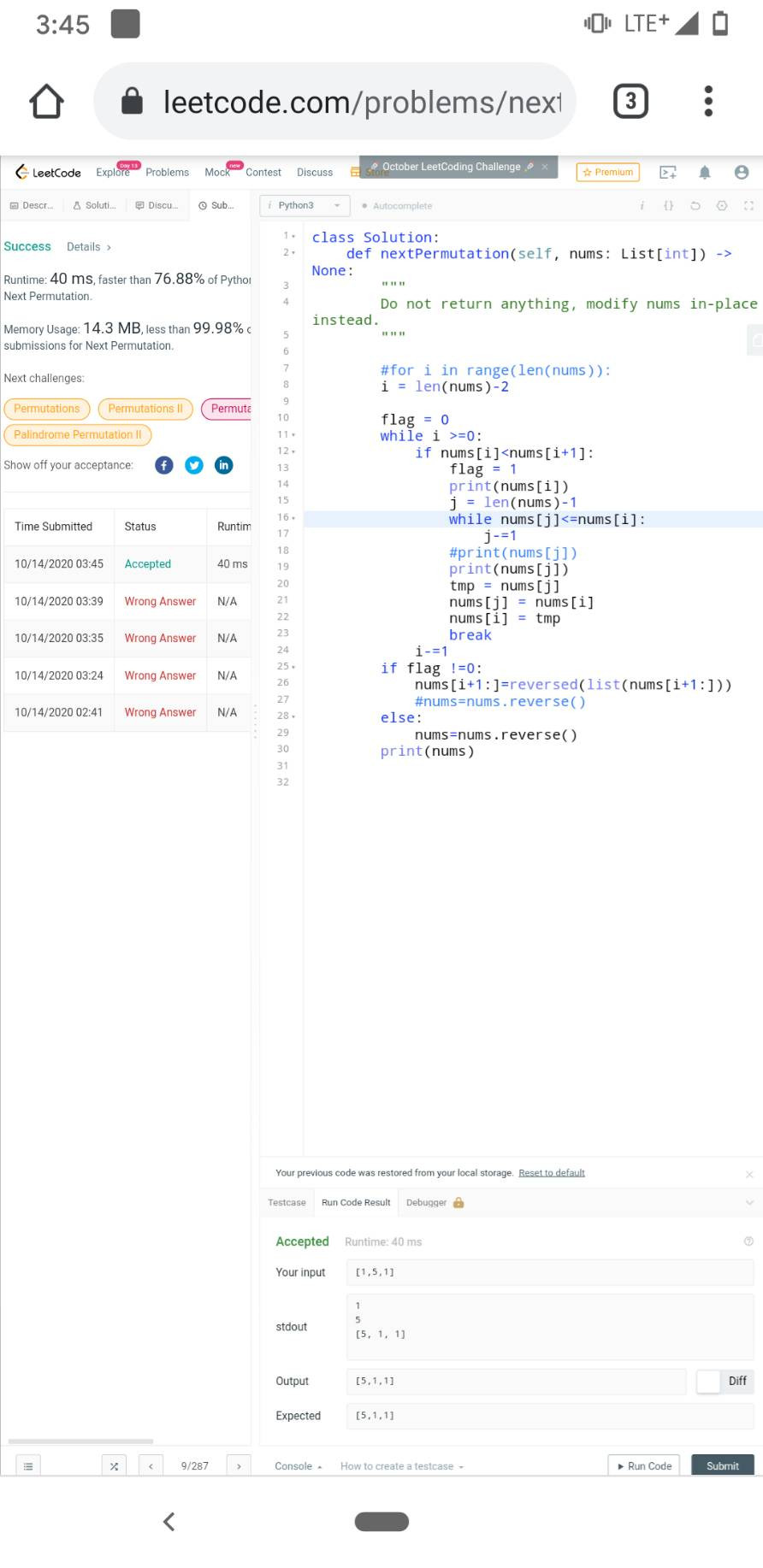Implement next permutation, which rearranges numbers into the lexicographically next greater permutation of numbers.
If such an arrangement is not possible, it must rearrange it as the lowest possible order (i.e., sorted in ascending order).
The replacement must be in place and use only constant extra memory.
Example 1:
Input: nums = [1,2,3]
Output: [1,3,2]
Example 2:
Input: nums = [3,2,1]
Output: [1,2,3]
Example 3:
Input: nums = [1,1,5]
Output: [1,5,1]
Example 4:
Input: nums = [1]
Output: [1]
Constraints:
1 <= nums.length <= 100
0 <= nums[i] <= 100
題意
Implement next permutation, which rearranges numbers into the lexicographically next greater permutation of numbers.
排列組合 且 下一個組合 的數字比 上一個大 : EX 1 EX 3
除了 到底的排列 : EX 2 ,則 全部翻轉(reverse)過來
解法
Tip Source: LeetCode 31 / Solution / Approach 2: Single Pass Approach
圖像解法動畫
Code
class Solution:
def nextPermutation(self, nums: List[int]) -> None:
"""
Do not return anything, modify nums in-place instead.
"""
#for i in range(len(nums)):
i = len(nums)-2
flag = 0
while i >=0:
if nums[i]<nums[i+1]:
flag = 1
print(nums[i])
j = i+1
while nums[j]<nums[i]:
j+=1
#print(nums[j])
print(nums[j])
if nums[j] > nums[i]:
tmp = nums[j]
nums[j] = nums[i]
nums[i] = tmp
break
i-=1
if flag ==0:
nums=nums.reverse()
print(nums)
Result 電腦解Code,躺床時繼續想個,想通則手機AC(Success)
